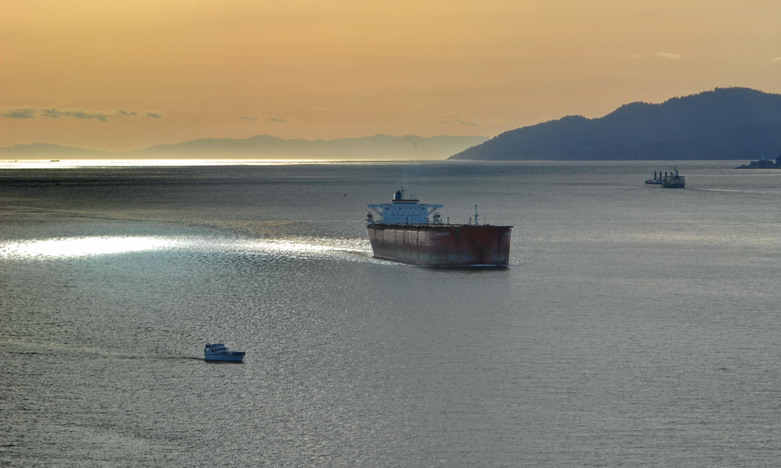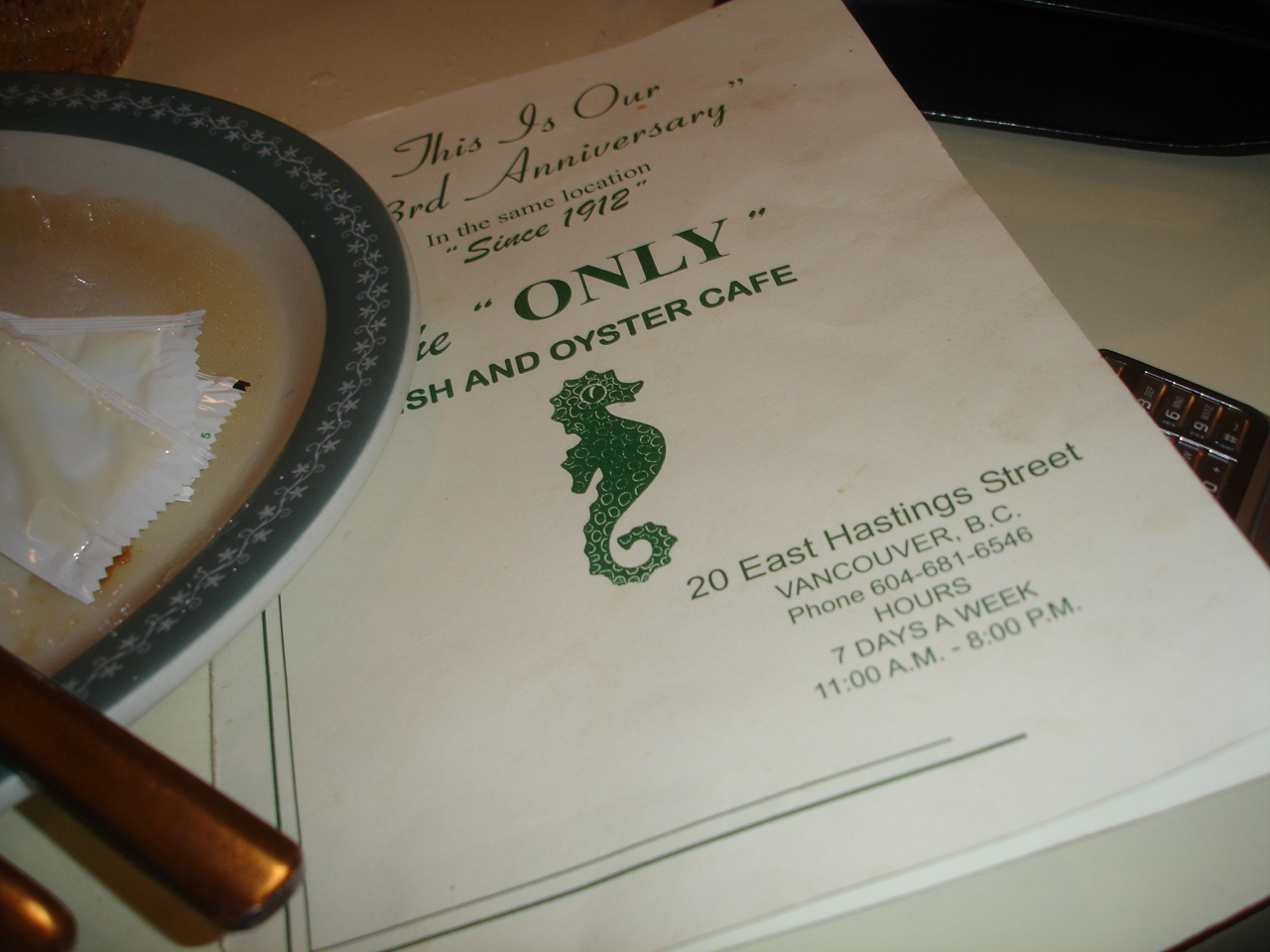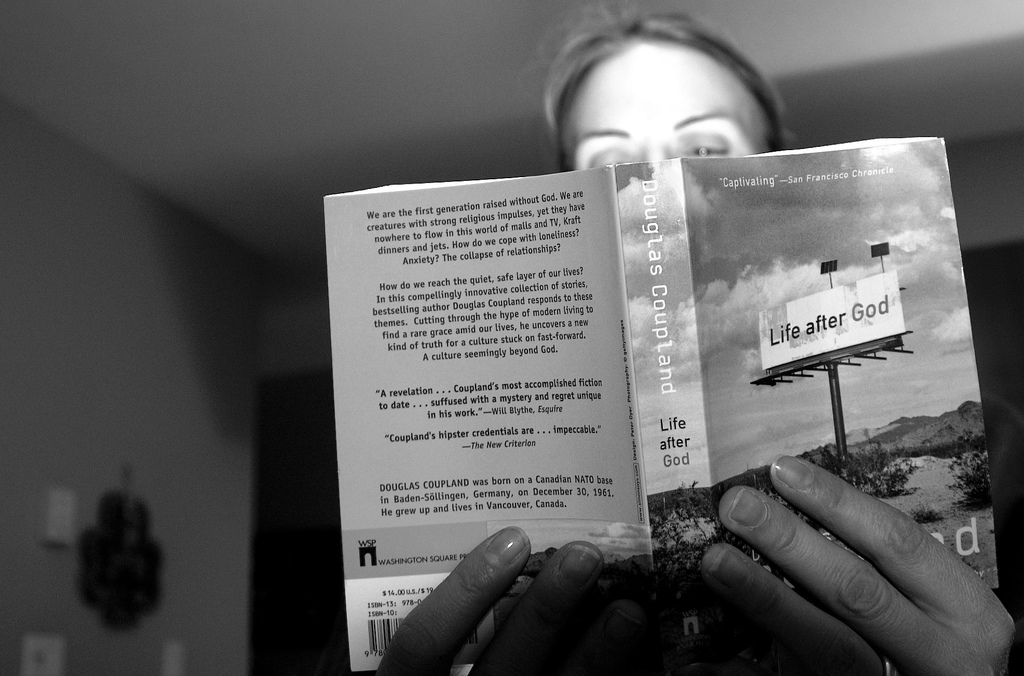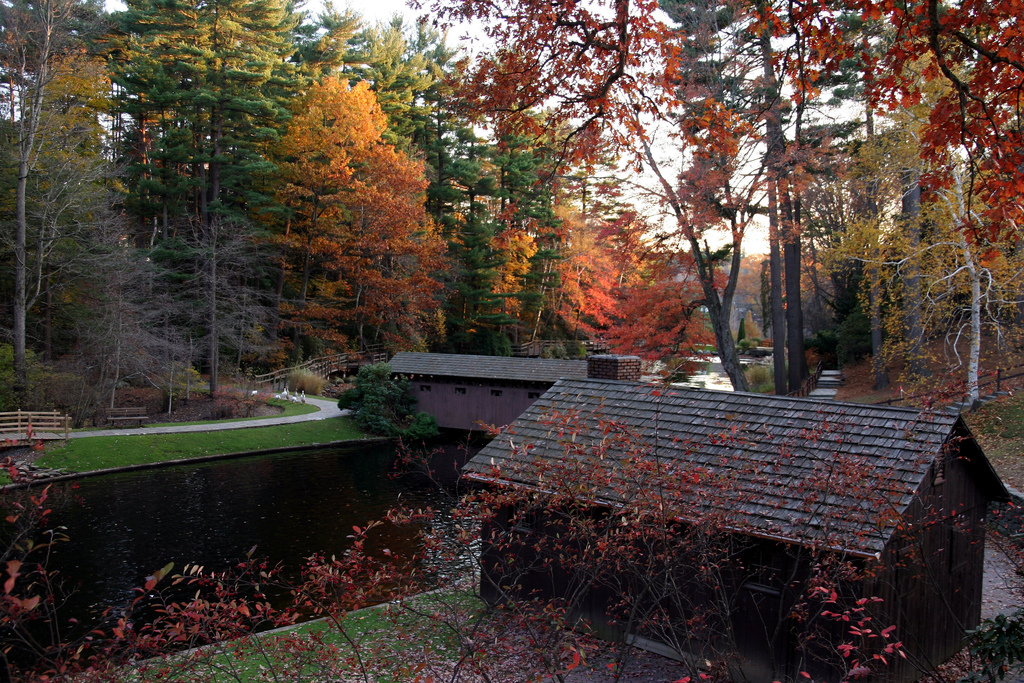If high quality reading matter is important in your day, and Vancouver residence is in your future, please come and walk through favourite residential areas which have, and which continue to nurture, well-known West Coast writers.
Ocean-side climate is soft, generally mild and moderate. One of your neighbours could be George Bowering, who describes it in his poem “Van, Can”.
‘Sometimes in mid-April we fill our hot-tubs’ (out-of-doors, of course.)
 Harbour Light - by ItzaFineDay
Harbour Light - by ItzaFineDay
He continues ‘posing wisely as the people who had foresight enough to create a city with warm winters.’ He describes sitting, sipping Perrier water and nibbling sushi, enjoying huge vista across Burrard Inlet. He cites ‘sunalive weekends, snow like fire in the sunlight, and a peak upthrust like a fist in a frozen ocean of rock that swirled into valleys the moon could be rolled in’.
Vancouver’s neighbourhoods seldom are subjected to extremes of heat or cold. Warm ocean currents wash the shores of Kitsilano, North and West Vancouver; of Richmond/Sea Island, and virtually surround the densified Downtown core.
Bowering quips away at the laid back lifestyle, epitomized in his image of a hot-tub. He imagines a visitor scoffing ‘not really Canadian, that pretty whale. Not Canadian, hardly glancing at the Japanese plum blossoms’. His voice retorts ‘why don’t I buckle down and fix it? Maybe I will, but first let’s order a spinach salad.’…’Let them think on Bloor Street we never think, but dance.’ He finishes his remarks ‘let chance and the Japanese current whisper when our ship comes in. Laden with little foreign cars. Light as the touch of our softly flowing guilt.’ You’ll find his students in the Pub at SFU, and don’t be surprised to find sushi on the Pub Menus there and at UBC.
Not too far away, but down the hill from SFU on Burnaby Mountain, along Hastings East you’ll enter a world of true mixed neighbourhood. Eateries? Italian, Greek, good pubs, some old standby’s nearer Playland will probably turn up writers. You want genuine espresso shops? Here they are, and watch for Julia Frangio, and her buds, Julia the author of several witty plays about second generation Italian Canadians, ‘Espresso’ for one. Another? ‘Chickens’ and dare say, you might see her in Church’s Chickens, picking up an order. Forget KFC: Dairy Queen is a good bet, though, especially for their cones, in summer.
 In a Hastings East restaurant - by Urban Mixer
In a Hastings East restaurant - by Urban Mixer
Wonder if Conrad Alexandrowicz hangs out around here? His play ‘The Wines of Tuscany’ certainly does, and there’s a great BCLB outlet to compete with Grampa’s home made thick red vinos.
Keep coming west, along Hastings. Still right beside the water of Burrard Inlet, and coming into an interesting new area of development. Waterfront’ lofts’ have been constructed, right beside the railroad tracks, challenging old images of the Roger’s Refinery area, just a block below, on Cordova. Artists galore, amid the remaining derelict hotels, and where many quietly, or not so quietly, hang out, before and after work.
This is not your suburban mall area, admittedly, but the nearby streets have survived residentially. Not just Chinatown, or Japantown any more, but home to architects, and musicians and writers, real neighbours, who frequent the Portugese Bakery and the wonderful fruit and veg. merchants. Check your glossy photos on book jackets, and look for Dennis Foon. I know he’s out there, somewhere. Hiromi Goto, Author-in-Residence for Vancouver Public Library is certainly nearby, if only on a flying visit for some special sea food. The Campbell Avenue Docks can serve ‘em up to you, still wriggling.
Noting the street names, Timothy Taylor continues: “Jackson Street, Heatley, Columbia. The Terminal, …the low roar of the harbour that fill(s) the air: immense and close, just over the railway yards, tons moved against tons. Railcars, shipping containers, plates of steel and creaking jetties.”
Wayson Choy, in ‘All That Matters’ writes of his home ground, this Eastend where new immigrants co-existed, and where it was possible for him, in his traditional if displaced Chinese family, to have as his best friend a son of Irish newcomers, who lived next door.
Still to come are the old Orwell, on Pender, the Princess, on Hastings, nearby the Lux and the shuttered site of the old Smiling Buddha and you see them and remember Timothy Taylor’s lines from ‘Story House’: ‘as if, in the grime of Hastings Street, with the stingy sunlight that seemed always to gather there’. Not a pretty area now, but it is under the back-hoes and nail-guns of redevelopers.
 Maple Tree Square reflected in the window of Six Acres - by mezzoblue
Maple Tree Square reflected in the window of Six Acres - by mezzoblue
We’re heading into Gastown now, its amazing coffee shops, its native arts. They used to say, in Vancouver’s early days, that you could find anything you wanted, in Gastown. You still can, and you may be one of the first to grab a unit in the under-construction sites peppering Hastings Street. The old time Postum Café still exists, still hosts whoever comes, and serves up Cheeze Whiz omelets, donuts, and coffee. Refills? At least that’s what Timothy Taylor says, in ‘Story House’. Apparently overlooked, for now, by his legions of ‘planners in the city of glass’, for such he dubs Vancouver’s pride: Densification of the Downtown Core. Drummm rollll.
Walk a few blocks north, towards the mountains, and hard by the new Hudson is the (in)famous Railway Club. It’s still going strong; They begin serving around lunch and keep on ‘til what ?, 4:00 a.m., as do the hotspots along Granville Mall. If you want some action, come’on down. Walk to the football at Canada Place, walk to hockey at G.M. Place. Walk to the Pressclub, coat-tailed onto Queen Elizabeth Theatre and Playhouse along Cambie Street. After the Opera, or the current live theatre by the likes of Morris Panych and Joan McLeod, refresh and watch at the Bar at the beautiful Westin Grand, or Subeeze sidewalk and indoor fun place.
Watch for Ivan Elizabeth Coyote, and her pals, and smile with them. During the daylight hours, hang out in the concourse of the Vancouver Public Library main branch. As Moise Sadafi the architect remarked, “A mall runs through it”. Not quite, but the coffee’s fresh, the Green Room in Blenz is great and if you don’t actually see Doug Coupland ‘spending an afternoon at the library, making people feel middle class by scowling at them’, you’ll maybe see Ruth Ozeki, in town buying something for her chicken farm, or maybe Caroline Adderson engaging in some more ‘sitting practice’.
There are three hot spots for spotting literature on the hoof, and ‘twixt the cup and the lip.
Coming from East Vancouver, starting at Commercial Drive, around The Havana Café and also further south, there is a good selection of Vegetarian places. The Havana hosts authors’ readings, and first runs of plays. Nice living spaces abound here: New replacement blocks of low-rise apartments, interspersed with sturdy old houses and older blocks of flats. The pleasure of real shopping streets, walkable residential area adjacent and good public transit beckons. People bike a lot around here, walk dogs and kids, play bocce in earnest, and avidly encourage ‘their’ soccer teams. Parks are dotted into treed streets, a great Community Centre offers a wide selection of programs, there are fresh produce and real butchers and jewelry and shoe stores. This is where Ivan Elizabeth Coyote lives and works.
Just past Main Street, Cambie is recovering from the deep cuts of Rapid Transit surgery. Near the Park Theatre, south of 12th and up to 18th, watch for Morris Panych and Shaun Macdonald, deep in discussion over some new joint venture. Luanne Armstrong is a block away, this is her home ground. Jennifer Lines and Dean Gibson, (Bard on the Beach and The Playhouse) live nearby. Fairview Slopes is almost an adjunct to the Cambie area, and leads to nearby Granville Island, with its annual Writers’ Festival, a Must See for any literati. K.C Dyer, Alison Acheson, David Ward will be there. Everybody goes to Granville Island. They come on foot, on bikes, by boat, by ferry and bus: A real melting-pot of talented humans cluster here. Hal Waite, over at the Festival office would surely have someone in his visitor’s chair whose works you have read.
 Life After God - Photo by slimninja
Life After God - Photo by slimninja
Third place? That has to be North Vancouver, with its own seaside market and Pier of shops.
Deep Cove writers turn up here. Bill Gaston, and Pam Johnston, and Wendy Nowell, Sara Ellis, John Moore. Story House also tells of ‘the place in Deep Cove (that) is fantastic’.
I’m name-drpping now, but let Douglas Coupland say it for all of us who lived and loved and loathed on the North Shore.
“I drove up to my parents’ …house further up the hill here, on the North Shore: up on the mountain, up in the trees to my old house-my true home, I guess.” Further into ‘Life After God’ he says ‘first there is love, then there is disenchantment, then there is the rest of your life.’ Near the corner of Stevens Drive and Bonnymuir, find a view to die for, a house to dream of or in, if you can swing it, and a place above the clouds when fog rolls into Vancouver Harbour and smothers the city below you in a feathery duvet. The rest of your life, indeed.
And on the Other Mountain, Grouse that is, “The bus climbed up Capilano Road, past the suburban houses nestled inside the tall Douglas firs, hemlocks and cedars. These houses seemed far enough away (from Downtown Vancouver) to seem like China.”
“Further up the mountain, the late-afternoon sky was cloudy and dark. When the wet air from the Pacific Ocean hits the mountains, it dumps all its wetness right there. The sky was just starting to rain as we got off the bus near Cleveland Dam and, as we crossed the road, I could tell we were going to get soaked.”
Where would they rush for shelter, for a good hot chocolate or fine pot of tea? Why, Edgemont Village of course, and perhaps find Blanche Howard sipping a dainty cup, with gentle humour and true appreciation. A suburban author, her book Polly’s Way carries the reader home, just as Coupland’s did, to the safe suburbs built on the north slope hills.
Cross the Lion’s Gate Bridge, drive through Timothy Taylor’s ‘Stanley Park’ and recall the hidden lives of residents, animal and human, he describes so touchingly. Drive beside Lost Lagoon, see fine apartment houses enjoying the calmness Pauline Johnson so loved, and in fact she gave the idyllic lake its name in her poem. Leave harbour front on your left, and turn south onto Denman, a magical street with water at each end and ‘freedom at the end of every cross street’. Cafes abound, so does The Old English fish and chips, beer, ice cream cones, gelati, cupcakes and flower decked greengrocers.
 Stanley Park - where writers go for inspiration. Photo by asmey145
Stanley Park - where writers go for inspiration. Photo by asmey145
Earle Birney lived nearby, he could see the mountains across the harbour, and UBC at the far end of English Bay. As he wrote he could see the raw peaks of Grouse and Goat Mountains, the twin peaks of The Lions daring climbers to risk, and the heavy forest of Hollyburn and Seymour. In ‘David’ he describes rugged mountains, where students go to climb, and where they first meet death in the skeleton of a mountain goat, and risk-relishing David forewarningly comments ‘I didn’t know a goat could slip.” ‘Hundred feet we fought the rock and shouldered our way.” Indeed, Birney’s mountains shoulder their way into the Vancouver skyline, and form amazing skyscapes for waterfront residences, along Georgia Street and below, on a strangely gentrified end of the seamy Cordova where we met Tat’s Café and the Downtown Eastside. A similar but more distanced view fills windows all along Point Grey, and those north-facing in Kitsilano.
Kits and Point Grey house many writers, and serve those budding ones at UBC, like the ones Birney used to inspire. Renovation has been the trend throughout Vancouver for at least a full generation. Birney wouldn’t recognize the once small, plain, stucco houses he passed daily on his way to work. Not plain, all-the-same any more, lush gardens and imaginative add-ons have altered once dull streetscapes into engaging venues. Homes in this area are so conveniently situated, Fourth Avenue cuts through, York and Yew run up from Kits Beach, Broadway is just a few blocks south and all boast fine small stores, speciality shops, theatres, libraries and unique restaurants. Enigma, out by University Village, Knotte’s renowned Pastry Shop, Margueritas, Sophie’s Café (funky, fun), bagel shops, great pubs and diners flourish.
It’s a soft place, Vancouver, a healthy, outdoorsy city, welcoming newcomers daily. It seems everyone “is from somewhere else” and that historically is true. It has made and is making for a vibrant, open cosmopolitan homebase for writers of many stamps and tastes and backgrounds.




